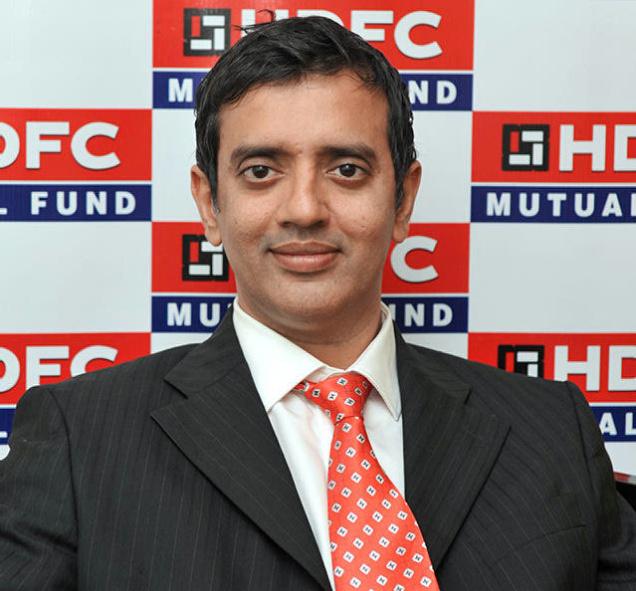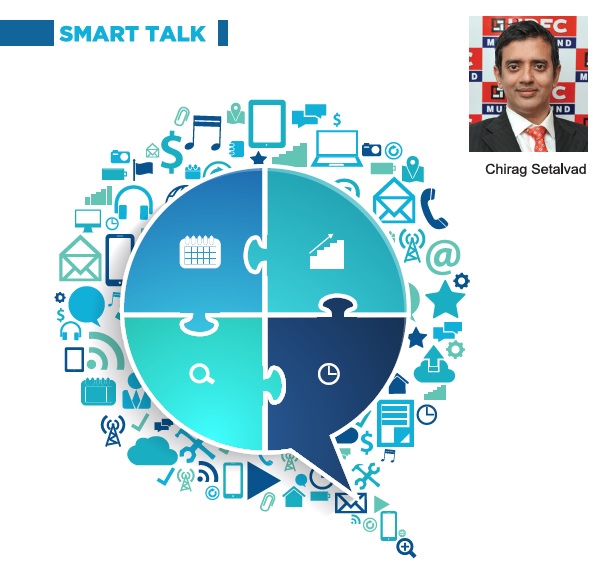
Chirag Setalvad is Senior Fund Manager at HDFC Mutual Fund. He manages over Rs 50,000 crore across seven funds: Children’s Gift Fund, Hybrid Equity Fund, Long Term Advantage Fund, Mid-Cap Opportunities Fund, Multi Asset Fund, Retirement Savings Fund (includes three plans: Equity, Hybrid Equity and Hybrid Debt) and Small Cap Fund.
HDFC Small Cap Fund and HDFC Mid Cap Opportunities Fund managed by Chirag Setalvad have been recommended by Geojit for many years. HDFC Mid Cap Opportunities Fund has been rated 5-star by Geojit.
It is observed that for the past few quarters midcap and small cap stocks have been struggling to generate alpha for its investors. In such scenario, what investment strategies and processes you follow to manage your portfolio?
Mid-Caps and Small Caps have undergone a meaningful correction over the last 12 months. The NIFTY Mid Cap 100 Index and NIFTY Small Cap 100 Index have declined by ~ 7% and ~ 18% respectively over the last 1 year whereas the NIFTY 50 Index is up ~11.5% (As of 20th May 2019). Hence, both the relative and absolute valuations of mid and small caps have corrected and normalized to a significant extent. Now that valuations have stabilized and become more attractive, the prospects to generate alpha from select small and mid-cap companies appear brighter.
As far as our approach is concerned, we follow a bottom-up approach with an emphasis on good quality companies that are available at sensible valuations thereby maintaining an adequate margin of safety. We avoid businesses of poor standards or where valuations are unreasonable. We also steer clear of companies where complexity of business is such that we cannot sufficiently appreciate the risks involved or where we have concerns about corporate governance practices. Our investments are driven by fundamental research with a medium to long term view.
Crude prices are standing on a higher trajectory and also trade uncertainty is prevailing due to US imposed trade restriction on Iran, what is your short to medium term outlook on the energy sector?
Predicting crude oil prices has always been risky considering the range of geopolitical factors affecting the demand and supply of crude oil. Needless to say, short term prices can vary significantly. Rather than looking at short term prices, it is better, in our opinion, to look at long term averages when evaluating the prospects of the energy sector. Also, you have to keep in mind that besides energy prices, regulations and a host of other factors will also play a significant role in shaping value in the energy sector in India.
The US imposed trade restriction i.e. the discontinuation of waiver granted to seven countries, including India, to import oil from Iran w.e.f. May’19, further restricts oil supply. While India has deferred its decision over purchase of Iranian oil till the election result, the possibility of decrease in oil supply due to sanctions on Iran and Venezuela (amongst other factors) has pushed oil prices up by almost 30% in 2019. On the contrary, the US-China trade war and possibility of a slowing global economy may act as counterweights on crude prices. India remains dependent on crude imports and higher prices and trade restriction will increase our import bill and put pressure on India’s fiscal deficit, current account deficit and inflation figures.
What specific strategies you adopt while selecting securities for your retirement savings funds?
Our overall approach remains the same of creating a bottom up portfolio with an emphasis on good quality companies that are available at sensible valuations. Due to the long duration nature of the fund, we have greater flexibility and hence can take a longer term perspective on companies that we can include in the portfolio. We can also maintain a judicious mix of mid and small cap companies. Otherwise, the approach remains the same.
Most of the funds in the industry carries higher exposure in NBFC stocks. With the recent debt crisis on this sectors, what additional the additional due diligence a fund house meet needs to take before investing in these stocks?
It is important to keep in mind that all NBFC stock are not the same and that the strength of their balance sheet and the nature of their lending can vary significantly from one company to another. Our focus remains on well managed NBFCs. We always carry out significant due diligence before investing in any company, both within and outside of financials. Naturally during challenging times of a company or sector we want to be more careful and are more sceptical. We try and spend even more time in evaluating the business and step up the channel checks that we do.
According to you what ideal behaviour should investors possess to overcome market uncertainties?
Investors, more often than not, expect their investment journey to be a smooth ride and panic at times of adversity and bad news. A knee-jerk approach to investing often results in sub-optimal returns as investors try to time the market and end up buying high and selling low. Market timing is fraught with risk. Changes can appear suddenly owing to various factors, making the risk of misjudgement significant. Investors looking for long term wealth creation through equities could ideally opt for SIPs (Systematic Investment Plans) in Equity oriented Mutual Funds to ensure disciplined investing and benefit from rupee cost averaging. In addition, during periods of market adversity and material corrections, investors could look to increase allocation to equities even via lump sum so long as they have a tolerance for volatility and a long term outlook.
What are the advantages and disadvantage of a high AUM scheme over a low AUM scheme? What advice do you wish to share with investors?
AUM is just one of the many factors that should be looked at when evaluating a fund. A larger size brings certain challenges such as being able to efficiently deploy the money as the investment universe shrinks to some extent due to liquidity and market cap constraints.
However, this can be managed by maintaining a well-diversified portfolio. Also, since a larger AUM can result in less liquidity or a higher ownership of a company it pushes us to focus even more sharply on the quality and longevity of the businesses that we own and the ability of management to handle adversity. It also reduces the churn in the portfolio. All of this can actually help improve the quality of the portfolio.
Further, most importantly, it’s worth noting that despite the increase in AUM over time, we have not changed the manner in which the fund is run. We continue to focus on companies of reasonable quality that are available at sensible valuations and build the portfolio on a bottom up basis. We have held a similar number of stocks and steady diversification over time despite an increase in AUM. We have also had a consistently low portfolio turnover. Lastly, despite the increase in AUM, the fund has remained focused on mid cap and small cap companies and has not drifted towards large caps. Hence, we continue to believe that the current size is manageable and investors should evaluate funds holistically.
DISCLAIMER: The views are expressed by Mr. Chirag Setalvad, Senior Fund Manager – Equities of HDFC Asset Management Company Limited (HDFC AMC), as on 21st May 2019. The views are based on internal data, publicly available information and other sources believed to be reliable. Any calculations made are approximations, meant as guidelines only, which you must confirm before relying on them. The information given is for general purposes only. Past performance may or may not be sustained in future. The current investment strategies are subject to change depending on market conditions.The statements are given in summary form and do not purport to be complete. The views / information provided do not have regard to specific investment objectives, financial situation and the particular needs of any specific person who may receive this information. The information/ data herein alone are not sufficient and should not be used for the development or implementation of an investment strategy. The statements contained herein may include statements of future expectations and other forward-looking statements that are based on our current views and involve known and unknown risks and uncertainties that could cause actual results, performance or events to differ materially from those expressed or implied in such statements. Stocks/Sectors referred above are illustrative and not recommended by HDFC Mutual Fund / AMC. The Fund may or may not have any present or future positions in these sectors. The above has been prepared on the basis of information which is already available in publicly accessible media. The above should not be construed as an investment advice or a research report or a recommendation by HDFC Mutual Fund/HDFC AMC to buy or sell the stock or any other security covered under the respective sector/s. HDFC Mutual Fund/AMC is not guaranteeing any returns on investments made in the Scheme(s). Neither HDFC AMC and HDFC Mutual Fund nor any person connected with them, accepts any liability arising from the use of this document. The recipient(s) before acting on any information herein should make his/her/their own investigation and seek appropriate professional advice and shall alone be fully responsible / liable for any decision taken on the basis of information contained herein. For complete portfolio/details refer to our website www.hdfcfund.com
MUTUAL FUND INVESTMENTS ARE SUBJECT TO MARKET RISKS, READ ALL SCHEME RELATED DOCUMENTS CAREFULLY










